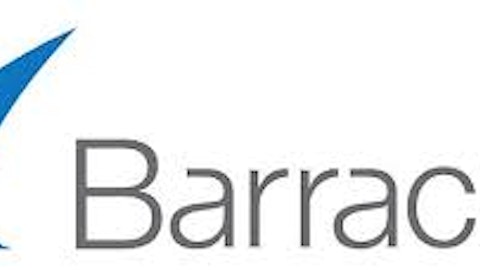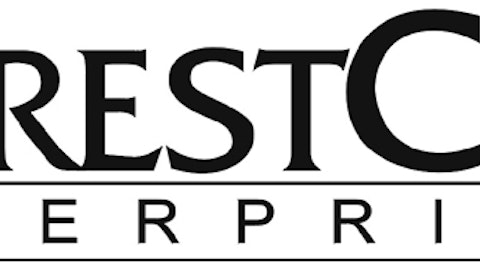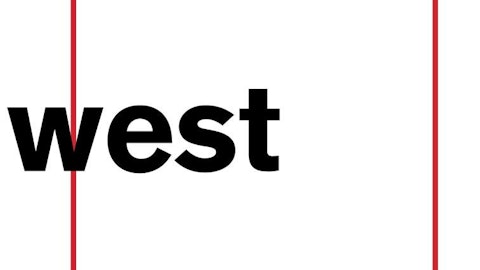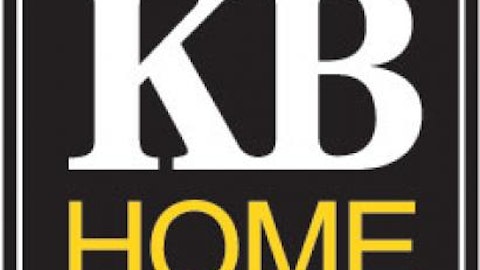Bookings were down modestly from the prior quarter, however we did have a slightly positive book-to-bill ratio. As occurred last year, the booking rates increased in the second half of the quarter. Once again, cancellations in the quarter were minor. We continue to believe that inventories worldwide at customers were relatively lean exiting the quarter. With regard to our major end-markets, industrial had the largest increase and communications had the largest decrease, just the opposite of last quarter, although none of these changes were particularly significant.
With regard to the detail of our financial results, sales decrease by 5% from the prior quarter. The gross margin percentage at 75.4% was impacted by the reduction in sales and consequently was down from 76% last quarter. Average selling prices at $1.88 increased from $1.87 last quarter. Operating expenses were unchanged having benefited from a one-week shutdown at the end of December. Operating income and pretax income of 44.9% of sales were down from 47% in the prior quarter due to the reduction in sales. The company’s effective tax rate decreased to 22% from 26% last quarter. Finally, net income of $123.6 million decreased from $129.5 million reported last quarter, as lower sales were partially offset by lower tax rate. Our return on sales of 35.1% was similar to last quarter’s 34.9%. For the second quarter in a row, our diluted shares outstanding were slightly lower as we purchased shares in the quarter to offset any potential dilution from employee stock options.
Worldwide headcount increased 1%, most of which was in our overseas factories. In summary, the effect of the items I just listed on the published quarterly results was that revenue was $352.6 million for the second quarter of fiscal year 2015 compared to the previous quarter’s revenue of $371.1 million and $334.6 million reported in the second quarter of the previous fiscal year. GAAP diluted earnings per share of $0.51, while down $0.02 from the previous quarter’s earnings per share of $0.53 were $0.07 better than reported in the second quarter of fiscal 2014, which had lower sales and higher interest expense compared with this quarter. The company no longer has interest expense compared with $12 million of interest expense in the second quarter of the prior of fiscal year as a result of the extinguishment of its convertible senior notes at the end of fiscal 2014.
Earnings per share this quarter would be $0.56 without the impact of stock-option accounting. During the second quarter, the company’s cash, cash equivalents and marketable securities increased by $45.2 million to $1.73 billion. Net of spending $65.8 million on cash dividends and $34.7 million on stock purchases. The company also announced that it would raise its quarterly dividend by 11% from $0.27 per share to $0.30 per share. At the current stock price the company’s dividend yield is 2.7%. The cash dividend will be paid on February 25th, to stockholders of record on February 13th.
Looking forward, the March quarter is historically a growth quarter for us. Although there were some weaker regions in the global economy, the USA is strong. Our book-to-bill ratio was slightly positive in the December quarter and we typically see strong bookings momentum in the automotive and industrial markets in the March quarter. Accordingly, we are currently forecasting revenues to grow sequentially by 4% to 7% in our fiscal third quarter. Overall, we continue to be optimistic about the increased electronic content in our end-markets, especially, automotive and industrial.
Now I would like to address the quarter’s results on a line-by-line basis, starting with bookings. Bookings decreased this quarter over the previous quarter although we had a modest positive book-to-bill ratio and bookings increased every month within the quarter. Geographically, bookings were up in the USA and down internationally. Within international, bookings were down in Asia and Europe and flat in Japan. By end-markets, industrial was up the most and communications down the most. At this time every quarter, we give you a breakdown of our bookings percentages by end-markets to give you insight into those markets that drive our business.





